C-5 Galaxy carries enough fuel for the average American car to make 130 round trips between New York and Los Angeles, or 31 trips around the world.
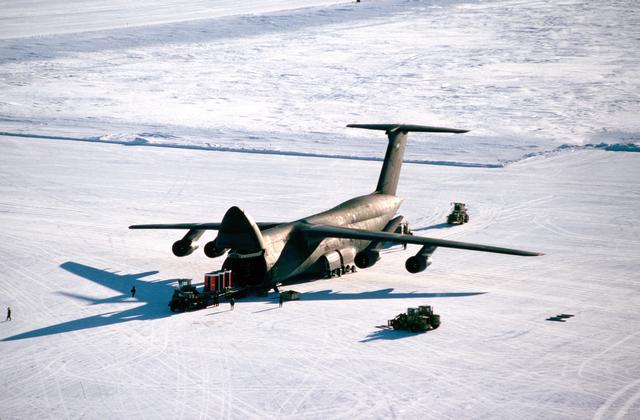
The interior and exterior paint on the C-5 Galaxy weighs 2,600 pounds.
The distance of the first flight by the Wright brothers was less than the length of the C-5 cargo floor.
The cargo compartment of the C-5 Galaxy will hold 100 model 113 (Beetle) Volkswagens, 106 Vegas, 90 Ramblers, 58 Cadillacs, or 6 standard Greyhound buses.
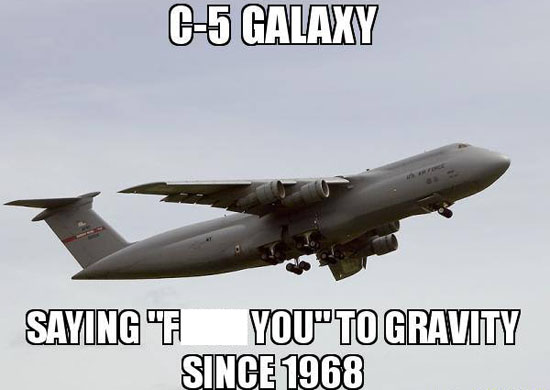
More than 100 miles of wiring are required to functionally operate all C-5 aircraft systems.
Each C-5 engine gulps approximately 42 tons of air per minute.
The cargo compartment of the C-5 is large enough to hold an eight-lane bowling alley.
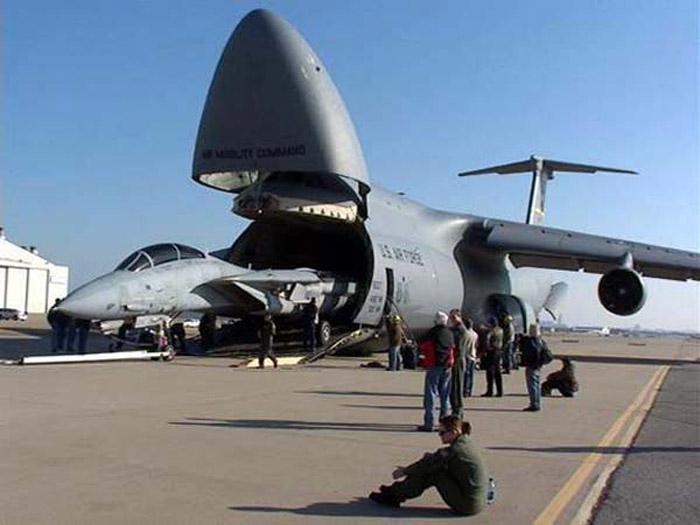
The total engine power of a C-5 equals that produced by 800 average cars.
Each C-5 tire wears down approximately 0.002 inches per landing.
Each C-5 wheel brake wears down approximately 0.0005 inches per landing.
The C-5 Galaxy contains over five miles of control cables.
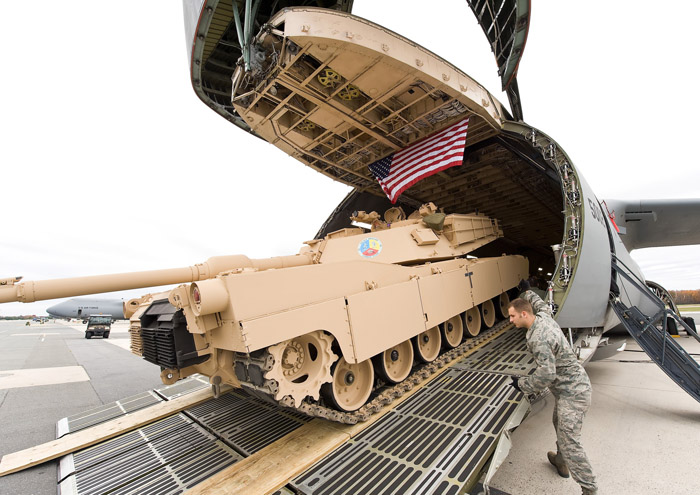
The C-5 can carry 25,844,746 ping pong balls.
The C-5 can carry 328,301,674 aspirin tablets.
The C-5 can carry 3,222,857 tortillas.
Each wing of the C-5 weighs over 40,000, which is equivalent to the weight of a C-130, minus engines.
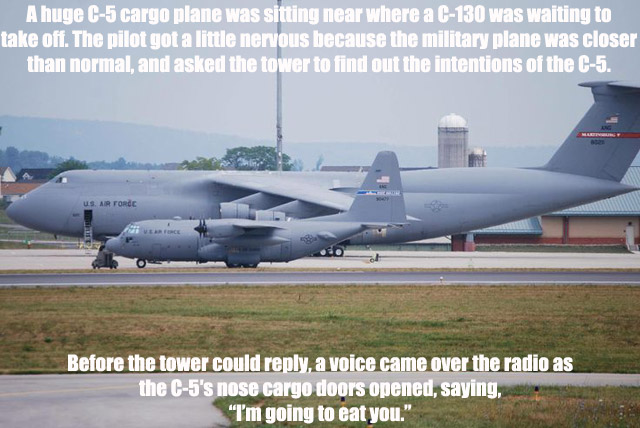
Each C-5 contains over four miles of tubing.
The C-5 can haul 3,934 bushels of wheat.
The C-5 cargo area is able to carry more automobiles than 13 transport trucks, or two “car-carrying” freight cars.
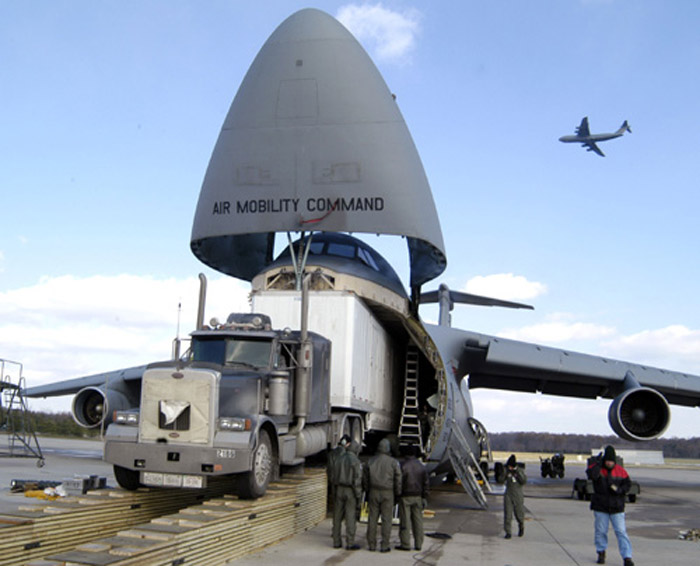
Each C-5 engine nacelle is 1 ½ times the length of a Cadillac, large enough to garage a Mustang.
Fuel capacity of the C-5, 49,000 gallons, would empty 6 ½ rail tank cars.
Also, its fuel capacity is equal to the volume of an average five-room house.
Tires on the C-5, (24 on the main landing gear, 4 on the nose landing gear), weigh 4,214 pounds.
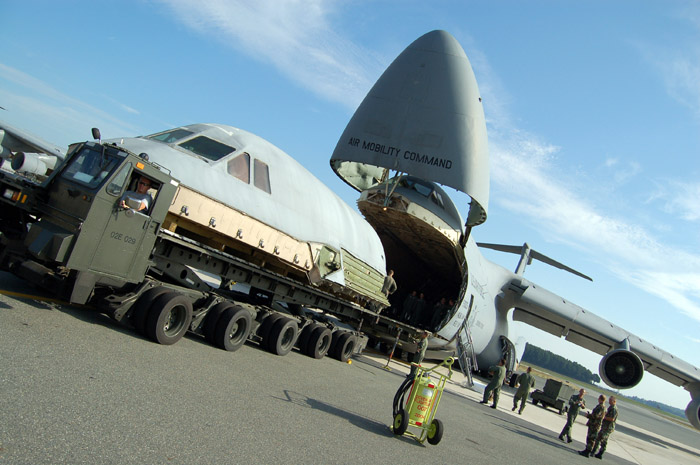
A full C-5 Galaxy load of first class mail, (at one ounce per letter/37 cents per letter) would require $1,391,200 in postage.
The environmental control systems of the C-5 has a total cooling capacity of 24 tons; enough to air condition eight average sized homes.
Fuel weight of the C-5 Galaxy is about equal to the maximum gross weight of the C-141A model.
If all the exposed surfaces of the C-5, which is computed to be 33,526.6 square feet, were covered in ice of uniform 1/16″ thickness, it would weigh 9,778.6 pounds.
Christopher Columbus’ entire three ship crew of 90 could have ridden comfortably in the upper deck of the C-5, leaving the whole cargo compartment for horses, chickens, goats, and trinkets for the Indians.
Theoretically, the C-5 can hold 2,419,558 golf balls, provided they are not in containers or otherwise restrained.
There are approximately 1,658,800 fasteners in the C-5 aircraft. They are located as follows: wings-411,900; fuselage-1,182,000; empennage-64,900.









